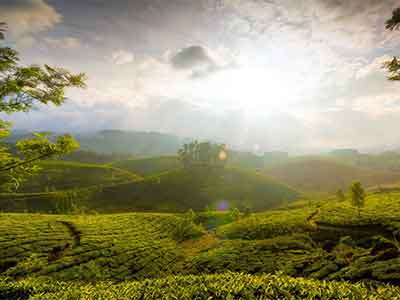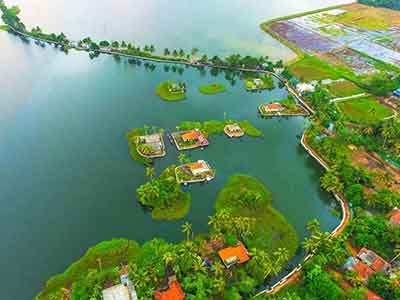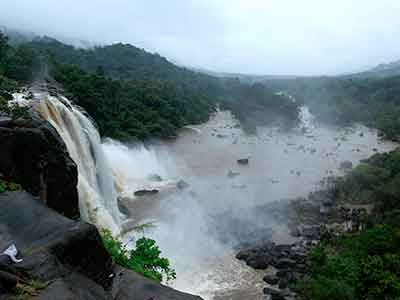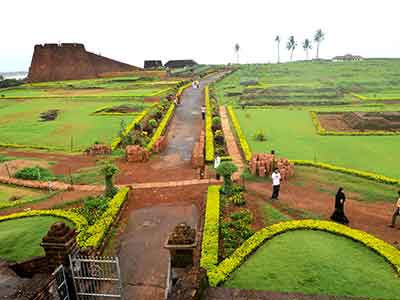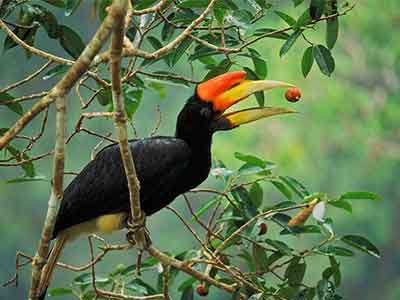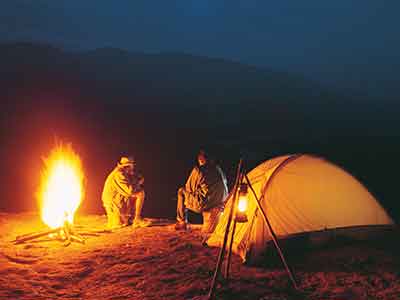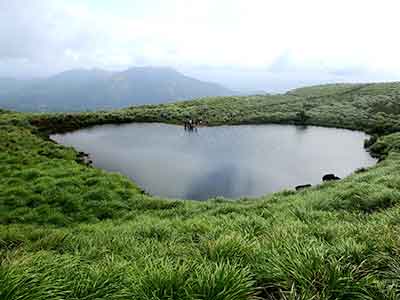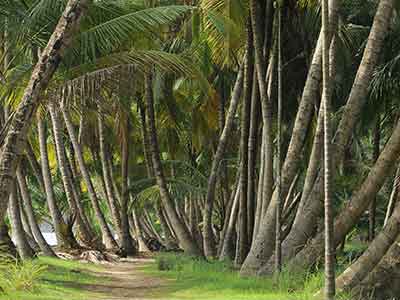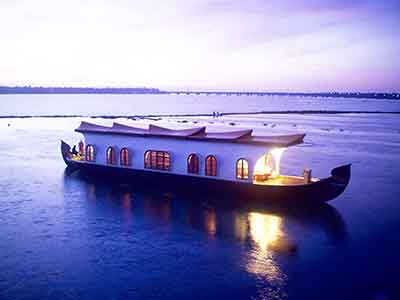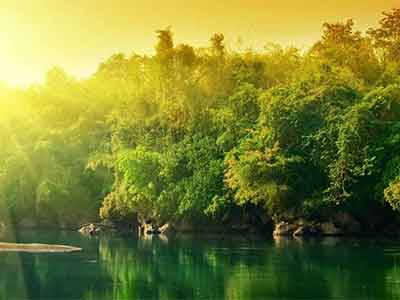Email: sales@travioholidays.in
Help: +91 98950 53303

If you are a passionate about wildlife and want to see an Indian star tortoise, a grey slender loris, blackbuck, leopard, elephant, peafowl, wolf, golden jackal or a mongoose that’s straight out of Kipling’s India, head over to Andhra Pradesh / Telengana. Those, in fact, are just some of the countless species you would encounter; the breathtaking diversity of fauna and flora on view draws scientists, conservationists, environmentalists, students and wildlife enthusiasts from all over the world to research, document or simply enjoy interacting with the natural world.
As the bird flies, a visitor would travel from the non contiguous mountainous ranges of the Eastern Ghats and the Nallamallas, over the flatlands of intense, jade green rice fields, coal-rich forests and prosperous bauxite and mica mines….into the semi arid Rayalseema region, replete with historical towns such as Chittoor, Kadapa, Kurnool and Anantapur…..before bending towards the mighty Bay of Bengal. Of the six rivers that water the land, two are perennial – the Godavari and the Krishna, their estuaries teeming with splendid migratory birds which regularly nest in the river basins and which the Estuarine crocodile, the increasingly rare fishing cats and the playful river otters call home. Closer to the coastline, sea turtles are regularly sighted – and grey pelicans and flamingoes dot the backwaters, revelling in the incredibly beautiful and plentiful feeding grounds of the Kolleru and Pulicat Lakes and the Tatipudi Reservoir.
It is said that the massive, forbidding Western and Eastern Ghats are a microcosm of the vast, natural world of India….and its Eastern heart beats with the sound and footfall of the great tigers, panthers, wolves, wild dogs, sloth bears, hyenas and black bucks…the shy chinkara, the enormous nilgai, the cheetal and the sambar. And with countless species of birds and reptiles marking territories and the passage of time….
A large number of wildlife sanctuaries and national parks have been created to protect the diverse ecosystems of the Eastern Ghats – an important role, in view of constantly threatened and critically endangered species, such as the Great Indian Bustard and the fringe lipped carp, among others.
Indira Gandhi Zoological Park
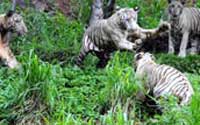
Within the Kambalakonda Reserve Forest on the National Highway, spanning about 250 hectares, the scenic Indira Gandhi Zoological Park near Visakhapatnam is bounded by both the Bay of Bengal and the Eastern Ghats on its four sides. With over 400 varieties of flora and over 80 species of animals within the premises, visitors enjoy deer safaris, sighting monkeys and other primates, lions and tigers (including a white tiger), small mammals, as well as a variety of exotic species imported from Australia.
Kolleru Lake Bird Sanctuary
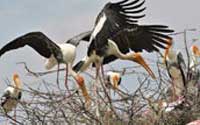
Kolleru Bird Sanctuary, near Eluru, is a large freshwater water sanctuary, sustaining 63 species of fish, crustaceans and molluscs and fed by two seasonal streams – the Budameru and Tammileru. It is linked to both the Krishna and Godavari rivers, serving as their natural flooding reservoir.
Aeons ago, the Siberian crane, Asian openbills, pied avocets, black headed ibis, spot billed pelican, migratory ducks and painted storks – all in all, an estimated 20 million native and other migratory birds including pintails, herons, egrets, pelicans, red crested pod chards and teals – discovered a lake within its deep forests and staked their citizenship to Kolleru. Winter sees them fly in from as far away as Siberia, Egypt, the Philippines and Australia to nest in the marshy area.
Pulicat Lake Bird Sanctuary
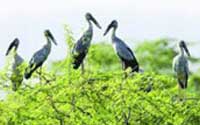
Nellore, in Chittoor District, famous for its medical facility – and more recently for a temple covered in gold – at the border between Andhra Pradesh and Tamil Nadu, offers the Pulicat Sanctuary. This 500 square kilometres, brackish water lagoon, the second largest in India, stretches along the coast of the Bay of Bengal. Plentifully supplied with fish, prawn and molluscs, it is ideal feeding and nesting ground for both native and migratory aquatic and terrestrial birds. The dry, evergreen forest sanctuary, sheltering monitor lizards, kraits, cobras and Russell’s vipers provides the perfect environment for flamingos, sandpipers pelicans, storks, ibises, cormorants, grey herons egrets, ducks, pintails and terns
Sri Venkateswara Zoological Park
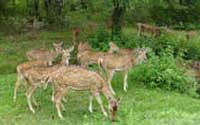
Spanning the districts of Kadapa and Chittoor, Venkateshwara National Park captures 353 square kilometres. The sacred hills of Tirumala and Seshachalam, flank the Park, which expresses itself typically in the extravagant manifestation of the region – lush verdant valleys, plunging gorges and high plateaus attended by spectacular waterfalls. More than 1500 species of flora nestle within both moist and dry spaces within the deciduous forests and many sightings may be routinely had of the rare slender loris, the golden gecko, the Indian giant squirrel, wild boar, nilgai, leopard, flying lizards, hyenas, mongoose, fox, civet, bears, sambar, spotted deer, sloth bear, blackbuck and a variety of mammals, birds and reptiles.
Flora
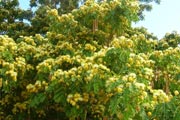
Typically, vegetation in the hilly regions is of the dry deciduous variety – mainly teak and a mix of species categorized under genera Dalbergias, Pterocarpus and so on. There are 4 mountainous, forest supporting biotic provinces – the Eastern Highlands, the Eastern Coastal Plains, the Central Plateau and the Deccan Plateau – where the Acacia, Ficus, Albizia Amara, Lagerstroemia and bamboo are native tree species. Herbs, climbers and shrubs employed in indigenous medicine are commonly spread widely over the region, especially within the Tirumala ranges.
The hugely diverse flora actually reflects the topography of the region. So, a visitor is as charmed by the rich, mangrove forests supported by the Krishna and Godavari estuaries as by the teak forests of the hilly ranges, before being captivated by the extremely rich, aquatic vegetation of the backwaters. For example, biologists have identified more than 59 species of aquatic vegetation within the Pulicat Sanctuary alone.
Our Top Tour Packages in South India
The four states that constitute South India are composed of distinctive geographic regions - narrow plains that fringe peninsular South India beside the Arabian Sea and the Bay of Bengal with two mountain ranges running alongside and the rocky hardtop of the Deccan and fertile central plains.
